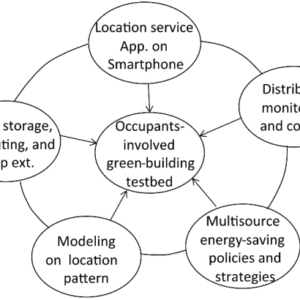Are Smart Buildings Delivering on Their Promise to Reduce Energy Consumption?
Buildings might move toward becoming “more brilliant,” yet that doesn’t really mean they’re sparing vitality. Truth be told, as indicated by a recent study. Smart buildings could really have almost no impact on vitality utilization on the grounds that. Regardless of innovation progressions – human die hard.
Keeping in mind the end goal to get exact outcomes. Analysts observed the building every hour for one year to catch the day by day, week by week and month to month designs. In particular, they took a gander at aggregate electrical energy utilization, warming and cooling energy utilization and outside/indoor natural information; key factors that make a building “green.” The outcomes were astonishing.
while correlated with environmental impact (temperature, humidity, etc.) little to no variant of the heating and cooling gadget turned into observed despite obvious seasonal outcomes. Second, electric power consumption is handiest 15% higher in the course of office hours than afterhours and weekends. A statistic that feels especially small whilst considering most of people aren’t at the workplace at the weekends or afterhours.
“we strategically selected to song this constructing in missouri as it represents a not unusual smart-constructing model in a four-season surroundings,” stated pan. “And we located that lots greater electricity is wasted than people recognize due to the constant, centralized control of heating and cooling. Which doesn’t reflect actual human comings and goings.”
so for instance, even in leed-certified buildings. Heat will be turned on in an empty workplace. Or cooling will live on in a cafeteria in a single day. Mainly if constructing managers begin to tire of power-optimizing options and fall into old daily exercises.
with the expertise won from the records measurements. The researchers designed an iot location-based solution that could sincerely live as much as the clever constructing promise. And the automatic strength manipulate iot software calls for no movement in any way from the quit-user. Thereby lowering the impact of bad human conduct.
this framework is composed of five design additives displayed within the under picture. Which include place carrier application for smartphone, distributed monitoring and manage, multisource energy-saving regulations and techniques, modeling on region styles and cloud storage computing.
the combination of these five components serves because the spine to an iot software gadget that could offer customers with the potential to control a couple of homes via their smart devices based on their place (smartphones, ipads, etc.). With out even pushing a button. This works through having vicinity sensors, which are already present in most smart devices, send a signal to the constructing’s web server. Which can in turn cause an strength change because the user leaves one building (e.g., turns lighting off) and strategies every other (e.g., turns lighting fixtures on).
“this framework basically allows customers to manipulate and put in force their personal energy policies in real time, allowing their energy intake to be proportional to their real usage,” pan said.
while the use of this iot framework. The actual electricity savings rely significantly on the type of constructing examined and the way among the electric powered appliances can be physically modified and controlled. In particular, the more home equipment controllable through human beings, the more energy savings executed. On this observe, the house constructing decreased energy consumption through 60%. At the same time as the workplace constructing decreased approximately 55%. The home constructing saved more energy than the workplace building due to the fact the workplace has more centralized appliances that cannot be controlled.
the benefit of this technology saves money and strength by virtually having the region-primarily based software activated on users’ gadgets. Because it already is for lots of them the usage of fb, google maps, and many others.
the researchers’ subsequent steps consist of trying out the system with more than one users simultaneously throughout a couple of buildings. As this inspiration was tested with handiest one man or woman across buildings.
Conclusion
all in all, present day electricity efficient buildings lack system intricacies that perform at full efficiency. With using this location-based system, smart homes may be capable of supply on their promise of (actually) greener pastures and users won’t ought to bat an eye.





